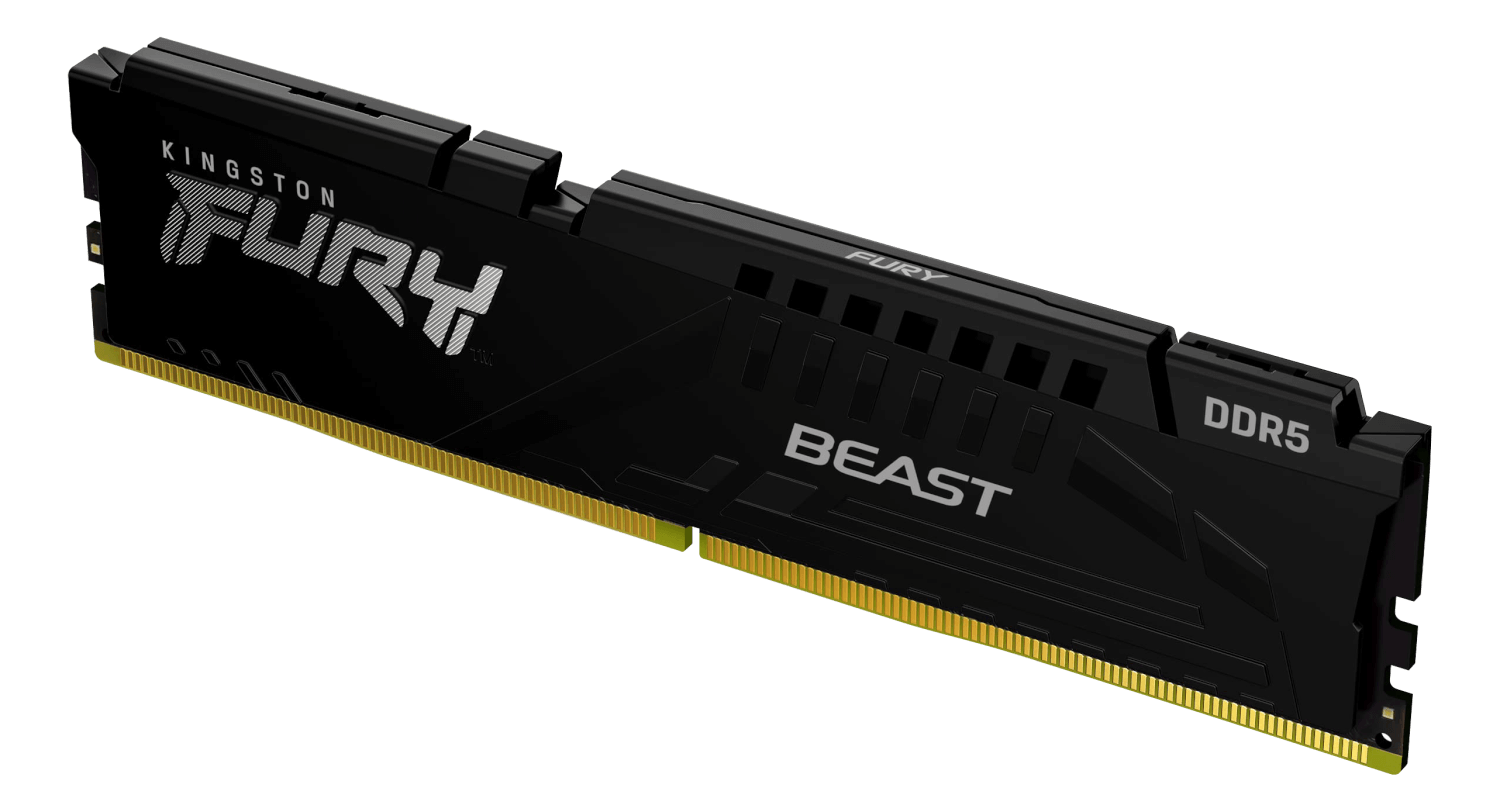DDR5
Stands for "Double Data Rate 5."
DDR5 is the fifth generation of DDR RAM, a type of memory used by desktop, laptop, and server computers. It replaces the previous standard, DDR4, and offers faster data transfer rates and better energy efficiency. It was first available in 2020.
DDR5 memory modules are available in several form factors. Desktop computers use DIMM modules, while laptop computers use smaller SO-DIMMs instead. DDR5 DIMMs are similar in size and shape to DDR4 DIMMs, using 288 contact pins and featuring the same curved bottom edge. However, DDR5 DIMMs feature a relocated keying notch to prevent you from inserting the RAM module into an incompatible slot. DDR5 SO-DIMMs use a different design than DDR4, featuring 262 pins instead of 260.
Some notable DDR5 specifications include:
- A maximum capacity of 512 GB per DIMM, although most modules are only 16-32 GB each.
- 32 internal memory banks, double the number from DDR4.
- Clock speeds between 1,600 and 3,200 MHz.
- Data transfer rates between 3,200 and 8,400 Mbps.
- A reduced power draw of 1.1 volts of electrical power, compared to 1.2 volts for DDR4.
- Two 32-bit wide data channels instead of a single 64-bit wide data channel. Using two smaller data channels allows DDR5 to transfer data more efficiently and with less latency.
- On-Die Error-Correcting Code (ODECC) on every module to detect and correct errors before data is sent to the CPU.
NOTE: A computer's motherboard and chipset determines which type of SDRAM it supports. Each generation of DDR SDRAM uses a different pin and notch layout, preventing you from inserting the wrong type of memory. Make sure you know what type (DDR3, DDR4, DDR5) and speed (DDR5-4800, DDR5-6400, DDR5-7200) of memory you need before upgrading your RAM.

 Test Your Knowledge
Test Your Knowledge